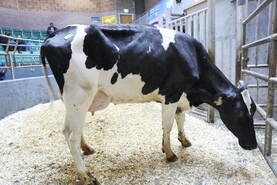As the spring work hits its peak and fatigue begins to set in, the focus is still on cows and calves on most farms. Most of the bulling heifers are now out and it is important to ensure that they are on target for breeding around 1 May.
Conception rates will be maximised if the heifers have achieved weight targets at service and are at least on their second heat. Target weight for Friesian heifers is 320kg to 350kg at mating, while Jersey-cross heifers should be about 300kg.
There is still time to supplement smaller heifers with 1kg to 2kg of concentrates at grass, but for most heifers, early turnout to good-quality grass should ensure that they are fit for service on 1 May.
In order to minimise disease risk, the farm vaccination programme for heifers should be completed at least three weeks pre-breeding. On most farms, this means that vaccinations for BVD and leptospirosis need to be completed now. On some farms, IBR may also be an issue.
Mineral supplementation of bulling heifers is often overlooked. These heifers will be fed on grazed grass for the next eight months, leaving them vulnerable to deficiencies on many farms. The main minerals of concern are copper, iodine and selenium.
Where the mineral status of a farm is established, it may be possible to focus supplementation, for example supplying iodine via water or copper via a bolus. However, on most farms, it is probably easiest to administer a bolus containing all of the major minerals and trace elements.
There are a number of suitable boluses available, with most lasting for up to six months. Boluses should be administered one month before bulling for best results and this can be done at the time of vaccination to minimise handling of animals.
Consult your vet now if you are unsure of the optimum vaccination protocol or mineral supplementation strategy for your herd.
Michael O’Meara works at Gortlandroe Vet Clinic, St Conlon’s Rd, Nenagh, Co Tipperary, part of XLVets, a group of practices working together to achieve a better future for agriculture and veterinary in Ireland. For more, go to www.xlvets.ie.






 This is a subscriber-only article
This is a subscriber-only article










SHARING OPTIONS: